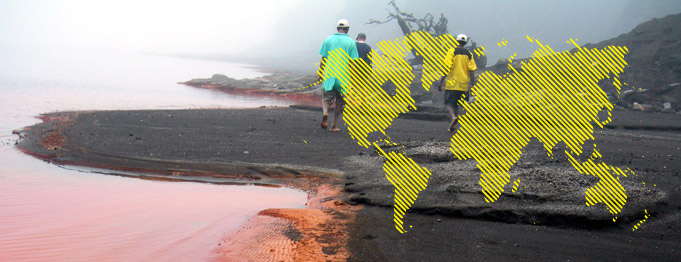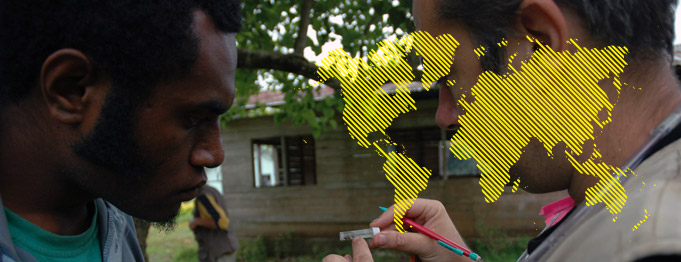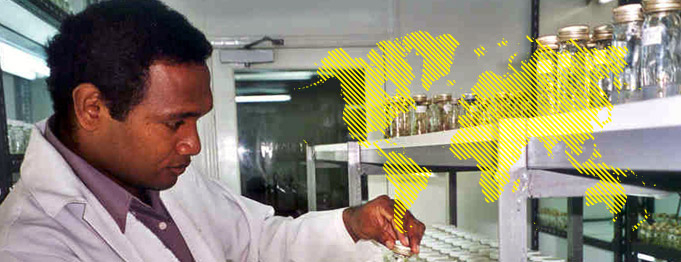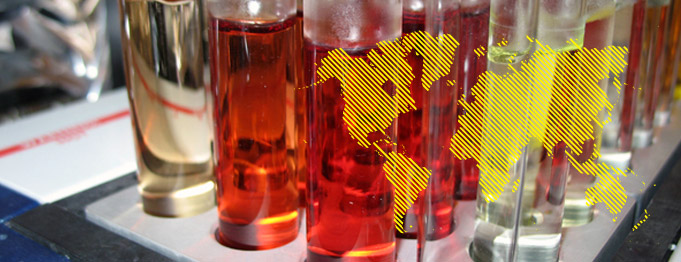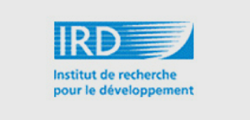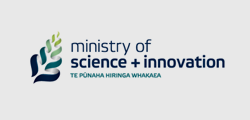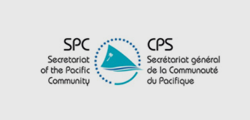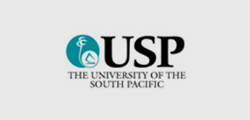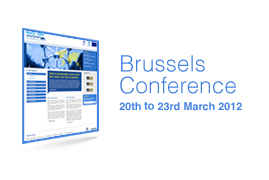The project
PACE-Net is a three-year coordination action, supported by Seventh Framework Program for Research and Technological Development of the European Commission. The main goals of PACE-Net are to:
- strengthen bi-regional dialogue and planning on Science and Technology between Europe and the Pacific on global and regional priorities of mutual importance;
- identify research partnership projects that will address those priorities; and
- raise awareness of the critical importance of the Pacific region to global sustainability and the vulnerability of its island countries.
Project Summary
The Pacific-EU network for Science and Technology (S&T) establishes a bi-regional dialogue platform on S&T between the EU and the 15 member countries of the Africa Caribbean Pacific (ACP) Group of the Pacific region, namely, Cook Islands, Federate States of Micronesia, Fiji, Kiribati, Marshall Islands, Nauru, Niue, Palau, Papua New Guinea (PNG), Solomon Islands, East Timor, Tonga, Tuvalu, Samoa and Vanuatu. The PACE-Net project also closely involves the Overseas Countries and Territories (OCTs) in the Pacific region (French Polynesia, New Caledonia, Wallis and Futuna, Pitcairn) while Australia and New Zealand bring to PACE-Net project their long-standing expertise in the Pacific. PACE-Net pursues the following objectives:
- Reinforce existing S&T dialogues and networks and promote regional integration for those networks. PACE-Net seeks to increase the cooperation between research organisations and universities in the region;
- Identify S&T international cooperation activities and programmes in the Pacific region. PACE-Net sets up dialogue fora bringing together the relevant S&T experts and stakeholders to establish the priority areas for FP7, including SICAs;
- Strengthen the coordination of S&T cooperation and the complementarities with activities and programs carried out by other European instruments. PACE-Net will examine possible synergies or complementarities with EU activities, especially with respect to challenges faced by developing countries. In particular, synergies with the European Development Fund shall be found.
Project pillars
Activities held in PACE-Net are implemented in parallel Work packages as follows:
WP1 Situational analysis: to identify and analyse the major research activities, capacities and partners in the region in order to inform INCO-Net development and implementation
WP2 Linking Science and Technology to Pacific development goals and needs: to identify the agreed science focal areas that support regional development goals, for ongoing collaboration between the European Union (EU) and the Pacific and to facilitate sustainable EU collaborations that support Pacific Science and Technology capacity to respond to development needs
WP3 Pacific EU Dialogue and Supporting Platforms : to provide a secretariat for the bi-regional policy dialogue platform dedicated to organising and executing the meetings that will be open to stakeholders including, for example, the EU-Commission, all EU-MS, Associated States, the Pacific Region including Australia and New Zealand as well as stakeholders from national and multi-lateral organisations
WP4 EU/Pacific S&T cooperation platforms: capacity building and partnership: to enhance EU linkages with regional researchers and institutions in order to drive Pacific research agendas and to enhance capacity of Pacific researchers and institutions to participate actively in FP7 research opportunities
WP5 Dissemination, Knowledge Management and Outreach: PACE-Net will sustain a strong outreach component so as to ensure the appropriate visibility and to reach key stakeholders
WP6 Management: to provide support to the project and dialogue processes and install the necessary structure for the good-development of the project, including decision making processes, implementation of the Work packages, monitoring the deliverables, financial management and communication with the EC
Partnership and Consortium
The PACE-Net consortium is composed of a nucleus of partners of most representative institutions involved in S&T in the region and working in close cooperation with local institutions and governments (see "Partners" tab in the menu). The ANU, UPNG and USP are partners in the PACE-Net Consortium.
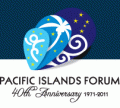
The Pacific Plan for Regional Integration and Cooperation is the master strategy for strengthening regional cooperation and integration in the Pacific. It provides a high-level framework that guides the work of national governments, regional agencies and development partners in support of the aspirations of Forum Member countries and our people. The Plan was endorsed by Forum Leaders at their annual meeting in Madang in October 2005. Oversight of the Pacific Plan is provided by the Pacific Plan Action Committee (PPAC). This Committee comprises representatives from each member and associate member states of the Pacific Islands Forum, as well as Executives of each of the Council of Regional Organisations in the Pacific (CROP) agencies. The role of PPAC is to review implementation of the Pacific Plan and provide high-level advice to Leaders on strengthening regional cooperation and integration.
The Pacific Plan was designed as a 'living document' so that it can adapt to the changing landscape of Pacific regionalism. It has been reviewed once, in 2009, and now Leaders have decided it is time for the Plan to undergo another, more comprehensive, Review.
PACE-Net submitted the following contribution to the Pacific Plan Review Team:
PACE-Net (pacenet.eu) is the European Commission-supported Pacific-EU Science, Technology and Innovation (ST&I) Network with members drawn from across the Pacific and European regions.
PACE-Net’s goals are to: strengthen bi-regional dialogue and planning on Science, Technology and Innovation between the Pacific and Europe (EU) on global and regional priorities of mutual importance; identify research partnership projects that will address those priorities; and raise awareness of the critical importance of the Pacific region to global sustainability and the vulnerability of its island countries.
Three PACE-Net bi-regional dialogues and accompanying thematic workshops since 2011 have brought together policy makers, funding agencies, and representatives from research, innovation and development institutions from the Pacific and EU. These produced policy briefs in thematic areas of high priority to both regions including: health; biodiversity and ecosystem management; climate change in relation to: water; agriculture and forestry; fisheries and agriculture; and natural hazards. These policy briefs identify knowledge gaps which are crucial for prioritisation of future research in order to develop robust, knowledge-based policy and plans.
Issue Addressed by this Submission
The lack of recognition in the current 2005 Pacific Plan (modified in 2008) of the fundamental importance of science, technology and innovation in the sustainable development of Pacific island countries and the betterment of its peoples.
Pacific Island Nations face many complex and challenging problems in the sustainable development of their countries and vast maritime regions in the face of global change. Making wise decisions in addressing these problems requires a solid and reliable knowledge base. In many cases, particularly those connected with managing our unique natural resources and the impacts of global change on them, our knowledge base is inadequate. Despite this, the current 2005 Pacific Plan (modified in 2008) does not recognise the importance of increasing the knowledge base and capacity of the Pacific by investing in regionally appropriate science, technology, innovation and research and building capacity in them. The absence of an ST&I goal is also mirrored in the absence of ST&I policies in many Pacific island states. Without that goal and those policies, the Pacific is in sharp contrast to other regions in the world and gives the appearance of being unaware of the fundamental importance of ST&I to the future.
Recommendations
It is recommended that the Pacific Plan includes the goals to:
Invest in and develop appropriate science, technology and innovation to underpin the sustainable development and improved planning and management of the Pacific region and the betterment of its people in the face of global change.
Increase regional capacity in relevant science, technology and innovation to better inform policy development, improved planning and management, augment development opportunities and improve adaptation to global change within the Pacific region.
As a strategy for achieving these goals, it is recommended that a task force from regional bodies including SPC, SPREP, Pacific Islands University Regional Network, the Pacific Science Association, research organisations within the region, as well as bi-regional and international agencies and aid donors be established to build on the thematic priorities already identified in PACE-Net and elsewhere. Based on the established priorities, the task force will develop short and long term priorities in ST&I relevant to the sustainable development and improved planning and management in the Pacific and strategies to address these priorities and increase regional ST&I capacity. It is recommended that this task force also identify funding opportunities to support ST&I priority strategies and capacity building and develop mechanisms for monitoring ST&I progress.
Planned Outcomes
Planned outcomes resulting from the recommended ST&I goals are:
o Improved knowledge-based policies for the sustainable development of the region
o Improved planning, management and use of the vast ecosystems and invaluable natural resources within the region
o Increased capacity and training in ST&I
o Improved resilience in adapting to global change
o Increased development opportunities
o Augmented opportunities for funding soundly-based development proposals
o Improved health within the region
o Improved agricultural, forestry, aquacultural and fisheries productivity
o Enhanced use of renewable energy o Improved ability to cope with natural hazards
o Improved communications
Concluding Commitment
PACE-Net and its successor PACE-Net+ recognise both the critical importance of the Pacific region to global sustainability and the vulnerability of its island countries. We are committed to strengthening the regional dialogue and planing on ST&I between Europe and the Pacific on global and regional priorities of mutual importance and to increasing capacity and opportunities. Our aim is to assist the region and especially those small island countries with very limited ST&I capacity to achieve the goals recommended above. We are dedicated to assisting the Pacific community in achieving its full potential in ST&I and in achieving the sustainable development, planning and management of this globally critical region to the betterment of its peoples.
More about the Pacific Plan Review 2013 (http://www.pacificplanreview.org/pacific-plan/)


